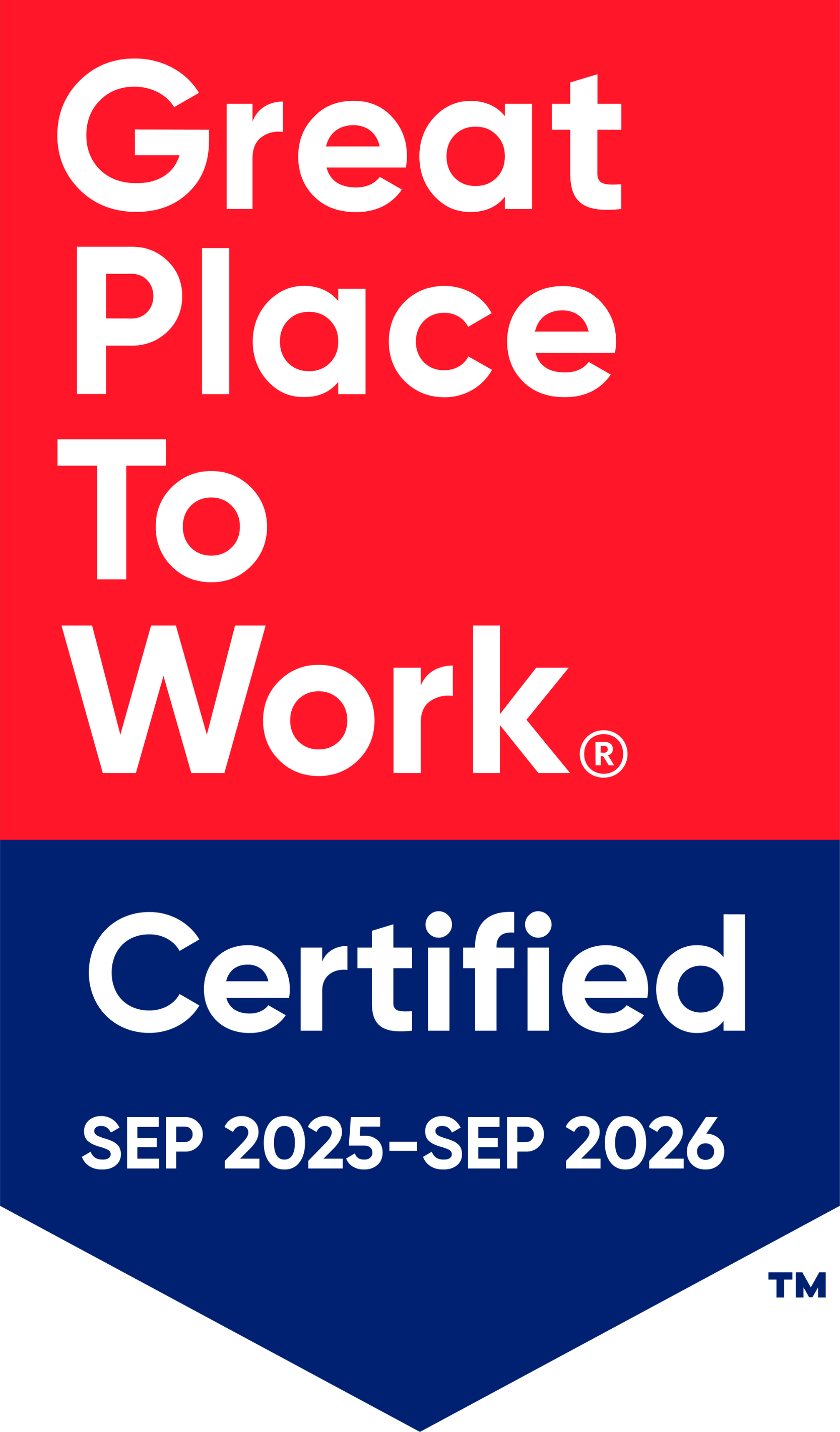Top Benefits of 360 Performance Reviews for Employees

Performance reviews play a crucial role in employee growth, but traditional methods often provide a limited perspective. A 360-performance review changes that by gathering feedback from multiple sources, offering a well-rounded view of an employee’s strengths and areas for improvement. This approach promotes fairness, self-awareness, and career growth, leading to a more engaged and productive workforce.
What is a 360 Performance Review?
A 360 performance review is a structured feedback mechanism that collects insights from multiple sources within and outside an organization. This includes input from direct managers, peers, subordinates, and even external stakeholders such as clients or vendors. The goal is to provide employees with a holistic understanding of their strengths, work habits, and areas needing improvement.
Key Elements of a 360 Performance Review:
Multiple Feedback Sources: Unlike traditional performance reviews that depend solely on a manager’s evaluation, 360 reviews incorporate diverse perspectives, leading to a more well-rounded assessment.
Comprehensive Evaluation Criteria: The review process assesses various competencies, such as leadership skills, teamwork, communication, problem-solving ability, and work ethic.
Anonymity for Honest Feedback: Many organizations opt for anonymous reviews to ensure that employees receive genuine, unbiased feedback.
Actionable Insights: The feedback collected is often compiled into a report highlighting common themes and specific areas for growth.
Why It Matters:
Reduces Bias: By incorporating multiple viewpoints, 360 reviews eliminate the potential bias of a single evaluator and provide a fairer assessment.
Provides a Full Picture of Performance: Employees receive feedback on their work from different perspectives, allowing them to see how their contributions affect others.
Encourages Self-Awareness and Growth: Employees gain insights into how their behavior and performance impact colleagues and the organization as a whole.
How to Give a 360 Review
Giving effective 360 reviews requires a structured approach that promotes transparency, fairness, and professional growth. When done correctly, they provide employees with a well-rounded understanding of their strengths and areas for development. Here’s how to make the process impactful:
Key Steps for an Effective 360 Review
- Choose the Right Participants
Selecting the right mix of reviewers is crucial to gaining balanced feedback. Include managers for leadership insights, peers for teamwork evaluation, direct reports for leadership assessment, and even clients if applicable. A diverse set of perspectives ensures a comprehensive view of an employee’s performance. - Use Anonymous Surveys
Confidentiality encourages honesty and reduces the fear of retaliation. Anonymous surveys allow respondents to share constructive criticism without concerns about workplace dynamics. This leads to more candid, actionable feedback that helps employees improve. - Provide Clear Guidelines
Unstructured reviews can lead to vague or biased responses. Establish clear criteria focusing on skills, competencies, and performance rather than personal traits. Reviewers should be guided on how to provide meaningful feedback that is relevant and useful for professional growth. - Deliver Feedback Constructively
Feedback should be framed in a way that highlights strengths while addressing areas that need improvement. Instead of vague criticism, offer specific examples and actionable suggestions. A solution-oriented approach fosters growth and maintains morale, preventing defensive reactions.
According to Forbes, 80% of top-performing employees actively seek feedback to enhance their skills and advance in their careers. A well-executed 360 review empowers employees with valuable insights, promoting a culture of continuous learning and development.
360 Review Process Explained
A structured approach ensures that 360 performance reviews are fair, insightful, and effective in driving employee growth. When executed properly, they provide employees with valuable feedback from multiple perspectives, leading to better self-awareness and professional development. Here’s how the process works:
Step-by-Step Guide to Conducting a 360 Performance Review
- Identify Participants
Select individuals who work closely with the employee, such as managers, peers, direct reports, and sometimes clients. A diverse group of reviewers provides a well-rounded assessment, ensuring feedback is not one-sided. - Develop Feedback Criteria
Use specific, objective questions that focus on critical areas like job performance, collaboration, leadership, and communication. Avoid vague or subjective questions to maintain accuracy and relevance in the feedback. - Collect Feedback
Gather input using surveys or interviews, ensuring anonymity to encourage honest responses. Digital tools and HR platforms can streamline the process, making it easier for participants to share their insights confidentially. - Analyze Results
Look for common themes, patterns, and areas of improvement in the feedback. Instead of focusing on isolated comments, identify consistent strengths and weaknesses that can guide future development. - Provide Feedback to Employees
Present the findings in a constructive and balanced manner. Highlight strengths first to boost confidence, then discuss areas of improvement with actionable suggestions. A supportive approach fosters a positive learning experience. - Create an Action Plan
Help employees set realistic, measurable development goals based on the feedback. Provide resources, training opportunities, or mentorship to support their growth and improvement in specific areas.
According to LinkedIn’s Workplace Learning Report, companies with strong employee development programs experience 34% higher retention rates. Implementing a structured 360 review process not only enhances individual performance but also strengthens overall employee engagement and loyalty.
Challenges of 360 Performance Reviews
While 360 performance reviews offer valuable insights, they can also present challenges that, if not addressed, may reduce their effectiveness. Companies need to implement structured processes to minimize these pitfalls and maximize the benefits. Here’s a closer look at common challenges and how to overcome them:
Common Challenges in 360 Performance Reviews
- Handling Negative Feedback
Receiving critical feedback can be difficult, especially if employees are not prepared for it. If feedback is vague or overly harsh, it may lead to defensiveness instead of growth. To address this, managers should frame feedback constructively, focusing on actionable improvements rather than personal criticisms. Training employees on how to receive and apply feedback positively can also make a significant difference. - Anonymity Concerns
Some employees may hesitate to share honest opinions if they fear retaliation or a breach of confidentiality. To encourage transparency, organizations should use anonymous surveys and communicate that feedback will remain confidential. Reinforcing a culture of trust ensures employees feel safe to provide candid insights. - Time-Consuming Process
A thorough 360 review requires multiple steps—selecting participants, collecting feedback, analyzing results, and providing coaching. If not streamlined, it can be overwhelming for both HR and employees. Using automated feedback tools and setting clear deadlines can help make the process more efficient without sacrificing quality. - Bias in Feedback
Personal conflicts, favoritism, or unconscious bias can influence evaluations, leading to skewed results. To minimize bias, companies should use standardized rating scales, structured feedback templates, and multiple reviewers. Encouraging participants to focus on behaviors and skills rather than personal opinions further ensures objectivity.
Providing feedback training to employees and managers helps improve the quality of responses. Teaching employees how to give objective, constructive feedback ensures that 360 reviews remain a valuable tool for professional development rather than a source of frustration.
Benefits of 360 Reviews
360 performance reviews provide a well-rounded evaluation of an employee’s strengths and areas for improvement. Unlike traditional reviews, which rely solely on a manager’s perspective, 360 feedback includes insights from peers, direct reports, and even clients, making it a more balanced and effective approach to performance assessment. Let’s explore the key benefits:
1. Encourages Honest and Holistic Feedback
Traditional reviews often provide a limited perspective, making it hard to get a complete picture of an employee’s performance. 360 reviews gather insights from multiple sources, including peers, subordinates, and managers, creating a more objective and fair evaluation.
Why It Matters:
Reduces bias by incorporating diverse opinions.
Provides employees with a comprehensive performance evaluation.
Encourages self-awareness and continuous professional growth.
Gallup found that companies using well-rounded feedback see a 14.9% lower turnover rate, as employees feel valued and supported in their development.
2. Improves Employee Self-Awareness
Employees may not always realize how their behaviour, work style, or leadership approach impacts others. 360 reviews offer a mirror for self-reflection, helping employees understand their strengths and areas needing improvement.
How It Helps:
Identifies blind spots that may hinder performance.
Strengthens emotional intelligence and workplace relationships.
Empowers employees to take proactive steps for self-improvement.
By fostering self-awareness, employees become more adaptable and receptive to feedback, leading to stronger personal and professional growth.
3. Boosts Collaboration and Teamwork
Feedback from colleagues helps employees see how their actions influence team dynamics. This fosters a sense of accountability and encourages better communication within teams.
Team Benefits:
Promotes openness and trust among coworkers.
Encourages a culture where constructive feedback is valued.
Strengthens team cohesion by addressing collaboration challenges.
According to SHRM, 65% of employees believe that peer feedback significantly improves teamwork and collaboration.
4. Supports Career Development and Growth
Without regular and meaningful feedback, employees can feel stagnant in their roles. 360 reviews provide insights that help individuals advance their careers and enhance their skills.
Growth Benefits:
Helps employees create personalized career roadmaps.
Identifies training and skill development opportunities.
Encourages mentorship and leadership development.
Employees who receive structured feedback are more motivated to grow, leading to higher engagement and job satisfaction.
5. Enhances Workplace Engagement and Satisfaction
Employees want to feel heard and valued. A culture of feedback makes them more invested in their work and motivated to perform better.
Why Engagement Increases:
Employees feel recognized and appreciated when their feedback is valued.
Constructive feedback fosters a continuous learning environment.
Recognition of strengths boosts morale and workplace confidence.
Gallup reports that companies with high employee engagement are 21% more profitable, showing the strong link between feedback and business success.
6. Reduces Bias and Improves Fairness
Relying solely on one manager’s evaluation can lead to subjectivity and favoritism. 360 reviews ensure fairness by incorporating multiple viewpoints, leading to more balanced and objective assessments.
How It Creates Fairness:
Reduces favouritism by using diverse perspectives.
Promotes diversity, equity, and inclusion in performance evaluations.
Improves accuracy in promotions and performance reviews.
Deloitte found that companies using multi-rater feedback have 31% more accurate performance assessments, reducing unfair evaluations.
7. Provides Actionable Insights for Leaders
360 performance reviews don’t just benefit employees—they also help leaders make informed decisions about talent management, team dynamics, and leadership development.
How Leaders Benefit:
Identify high-potential employees for leadership opportunities.
Pinpoint recurring workplace challenges that affect productivity.
Improve communication between employees and management.
By analyzing feedback patterns, leaders can enhance employee experience, drive organizational improvements, and retain top talent more effectively.
How HR Can Implement a 360-Degree Review Process
Successfully integrating 360-degree reviews into an organization requires a structured approach that fosters a culture of constructive feedback and continuous improvement. HR teams must focus on best practices to maximize the effectiveness of this process.
1. Set Clear Objectives
Before implementing 360 reviews, it’s essential to define what the organization wants to achieve. Without clear goals, the process can feel disorganized and ineffective.
Key Considerations:
Determine whether the focus is on leadership development, skill improvement, or performance evaluation.
Align feedback with company values and business objectives.
Communicate expectations to employees and reviewers to ensure transparency.
A well-defined purpose ensures that 360 reviews contribute meaningfully to employee growth and organizational success.
2. Use Reliable Tools
The success of a 360-degree feedback system depends on using the right technology to collect, analyse, and interpret responses efficiently. Manual processes can lead to errors, bias, and inefficiencies.
How to Choose the Right Tool:
Look for HR software that automates surveys and compiles feedback.
Ensure the platform allows for anonymous responses to encourage honesty.
Opt for tools with customizable reports to track progress over time.
Investing in the right software streamlines feedback collection and makes the process more effective and user-friendly.
3. Train Employees on Feedback Culture
Many employees struggle with giving and receiving feedback effectively. Without proper training, feedback can become too vague, overly critical, or unhelpful.
How to Foster a Healthy Feedback Culture:
Educate employees on constructive criticism focus on behaviors, not personal traits.
Teach managers how to interpret and communicate feedback productively.
Encourage a growth mindset, so employees view feedback as an opportunity, not criticism.
A strong feedback culture ensures that employees feel safe, valued, and motivated to improve.
4. Follow Up with Action Plans
Gathering feedback is just the first step the real impact comes from turning insights into meaningful development plans. Employees should leave the process with clear, actionable takeaways.
Steps to Create an Effective Action Plan:
Review feedback to identify key strengths and areas for improvement.
Set SMART goals (Specific, Measurable, Achievable, Relevant, Time-bound) for development.
Provide access to training programs, mentorship, or coaching based on feedback results.
Following up ensures that feedback leads to real improvements rather than being ignored.
Conclusion
Traditional reviews often lack depth, while 360 performance reviews provide a well-rounded evaluation by gathering feedback from peers, managers, and subordinates. This approach builds trust, encourages growth, strengthens teamwork, and offers valuable insights for better decisions. Implementing it effectively creates a culture of continuous improvement and employee engagement.
Frequently Asked Questions
How often should 360 performance reviews be conducted?
A 360 performance review is best conducted once or twice a year to provide actionable feedback without overwhelming employees. This allows time for growth and improvement while avoiding feedback fatigue. Conducting reviews too often can lessen their impact, while infrequent reviews may miss key development opportunities.
Are 360 reviews anonymous?
Yes, most companies use anonymous surveys to encourage honest feedback without fear of backlash. This approach ensures professionalism and leads to more accurate insights. Some organizations opt for partial anonymity, sharing only aggregated responses to maintain transparency.
Who should participate in a 360 review?
A 360 performance review gathers feedback from managers, peers, direct reports, and sometimes external clients. This diverse input offers a well-rounded evaluation of an employee’s performance, strengths, and areas for improvement from multiple perspectives.
What’s the biggest challenge in 360 performance reviews?
Negative feedback should be seen as an opportunity for growth, not criticism. Creating a growth-oriented culture encourages employees to view feedback as a way to improve. Managers should offer constructive suggestions with empathy and focus on both strengths and areas for improvement, fostering a supportive environment for development.
Do 360 reviews replace traditional manager reviews?
Not necessarily. Many companies use 360 reviews as a supplement to traditional reviews, offering a broader, more detailed evaluation. While traditional reviews focus on manager feedback, 360 reviews incorporate insights from peers, direct reports, and sometimes external clients, providing a more well-rounded perspective on performance.









_svxLrd-8yH.png)

_2VYSFUTN5m.png)

_JiluXJRGNl.svg)

_2djTKNocf.png)





_Rapo0hRMBy.png)

















